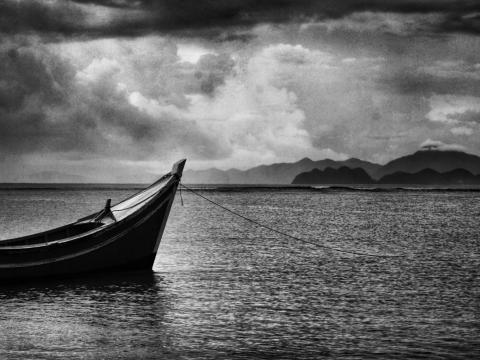Why we need to put refugee children first

By Gabriela Olguin, Child Protection Regional Adviser in South Asia & Pacific, World Vision
They were drastic images. People too weak to stand, their skin clinging to their bones. Their eyes had darkened, void of hope. They had no where to go, no one to turn to for help.
I know what they were going through. I’d worked with people escaping desperate situations before.
Nearly 20 years ago, I was working in Mexico for an organisation that helped people from marginalised indigenous communities.
During that time, thousand of refugees from Guatamala had streamed across the border, fleeing political violence. They arrived broken in Mexico with nothing. They’d endured too much – loved ones had been killed or tortured. They ran, hiding in bushes along the way whenever the army came too close. Years after the experience, grown men still spurted tears when they recalled their escape.
So far in 2015, UNHCR estimates 25,000 people have sailed across the Andaman Sea, clinging to hope that they might be able to have a better life.
Now, in Asia, where I currently live, I’m seeing similar images again in the media.
This time, the refugees are in boats. Thousands are boarding boats to end their reality of oppression and abuse. They are haunted people – suffering years of abuse and systemic discrimination. In 2015 alone, the UNHCR estimates 25,000 people have sailed across the Andaman Sea, clinging to hope that they might be able to have a better life.
But they are facing overwhelming obstacles. In May, some 8,000 floating refugees from Myanmar and Bangladesh were rejected by the countries where they sought help. Eventually, fishermen in Aceh, Indonesia rescued hundreds while others were later accepted by Malaysia, Philippines and Thailand.
But even when they arrive in a new country, the struggle is far from over.
One in three aboard those boats are children. Some arrive alone. They’ve been sent on the boats because smugglers have promised their parents a better life for the child. Other children are sent because their parents want to protect them from forced labour, sexual assault and the misery of poverty.
One in three aboard those boats are children. Some arrive alone.
As the international community marks World Refugee Day on 20 June, it’s these children who we aim to shine a light on. They are in desperate need.
Here’s what we know: refugee children who flee their homes can experience physical, psychological, cognitive, social and spiritual harm that hinders their development. Refugee children have a greater risk of abuse, neglect, violence, exploitation or trafficking.
They need special protection and assistance when they arrive in a new country, especially if they arrive unaccompanied.
To address the psychosocial well-being of refugee children, it is key to restore a sense of normalcy. Children do best when they have a daily routine – this helps them become more emotionally stable and experience psychological security. It is also crucial that refugee children who have been harmed prior to embarking on the journey or while escaping are provided with special assistance to address their needs. Children need to be able to express themselves freely and understand what is happening to them.
World Vision has joined a coalition of international agencies – including UN bodies – to call on governments act to protect the refugees who have sailed across the Andaman Sea. We are calling on host government to urgently help protect the refugees, in particular refugee children.
We are also reminding actors helping refugees to be guided by the best interests of those children, no matter who they are and where they come from, based in the International Convention on the Rights of the Child. Using that document as a guide, we are calling for:
- Host countries not to force refugee children to return to the country of their origin, based in the customary international law principle of non-refoulement
- Governments to ensure all children are cared for in a safe place, with access to education, health, social and legal services, irrespective of their refugee or migrant status
- Family tracing to be a priority. Unaccompanied children require that tracing for parents begin immediately. When parents or relatives are located, children need help in maintaining communication with them until they can be reunited
- Humanitarian assistance with child friendly approaches, including registration and identification, trauma counselling, psychiatric care, gender-based violence response and psycho-social support, as well as the provision of primary healthcare
Being a refugee can give a second opportunity for children to restart their lives. After all, every child deserves the right to realize their potential, and enjoy a life free of discrimination, exclusion and deprivation.